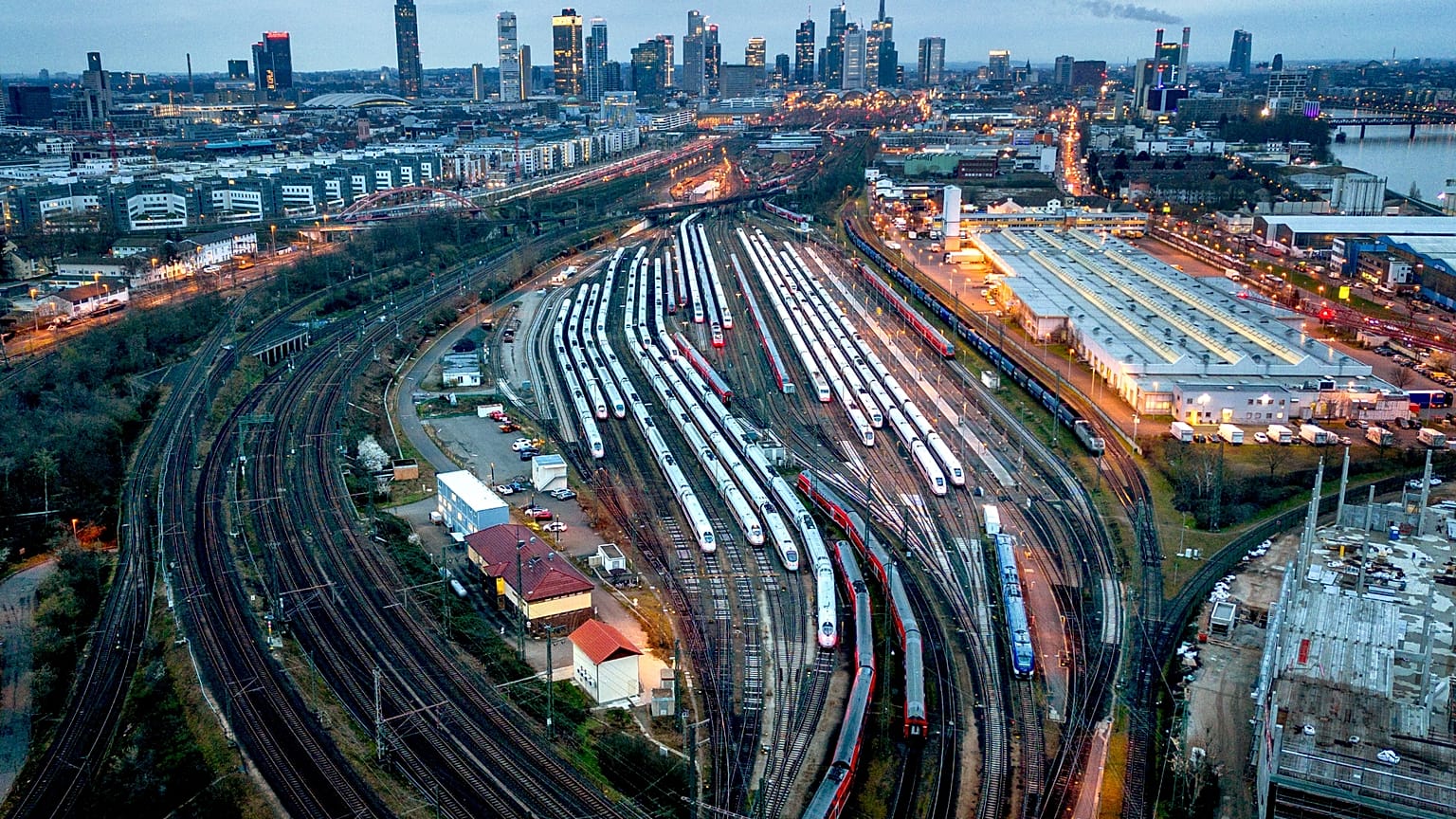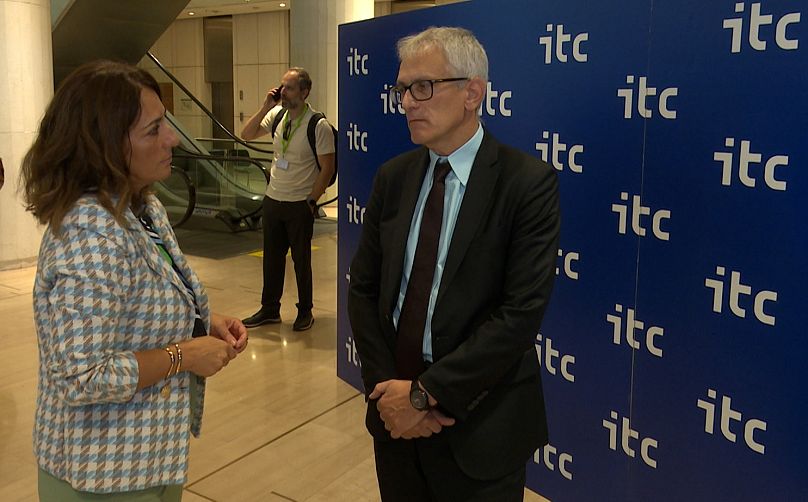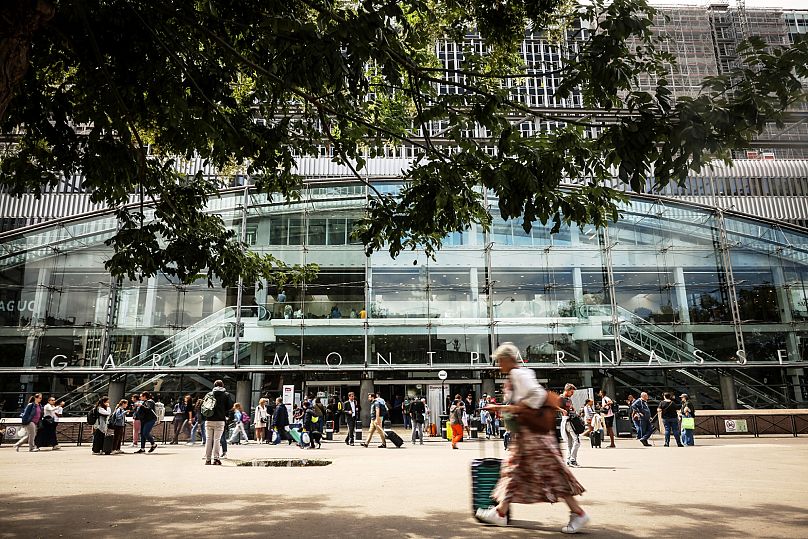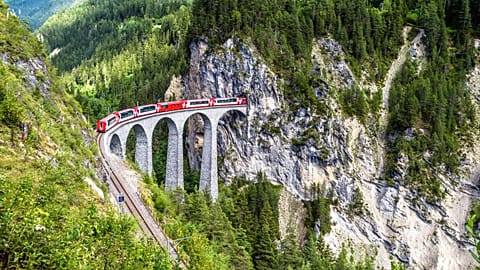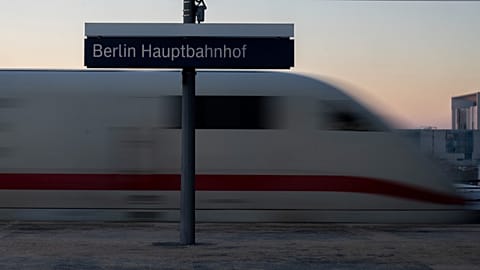The High Speed Rail Network is expected to be completed in 20 years and a European study estimates the cost of implementation will be €546 billion.
Fancy a trip from Athens to Istanbul in four hours? Or perhaps hopping on board in Madrid and getting off in Milan is more to your taste.
It sounds like a train travellers dream but that's the plan for the European High-Speed Rail Network, promoted by the Community of European Railway and Infrastructure Companies (CER) and expected to be adopted by the European Commission.
The ambitious network, connecting all major EU cities, is expected to cover more than 49,400 kilometres of track carrying trains travelling at speeds from 250 km/h to 350 km/h.
Speaking in Athens, CER's Executive Director Alberto Mazzola told Euronews that the European Commission's Sustainable Transport and Tourism Committee is putting train travel at the top of the list of priorities for greener and more resilient transport.
"I understand that the European Commission, probably on 21 October, will present the Masterplan for High Speed Connections for all capitals and major cities. We believe it is feasible," he says.
"We have been working for four or five years as an association on this. To give you a simple example, we would like all capitals in Europe to be connected by high-speed trains, including, of course, Athens."
"All large cities and urban agglomerations of around 250,000 inhabitants, such as Thessaloniki , should also be involved. And the cities, the important cities along the line with fewer inhabitants, should also benefit," he added.
The backbone of travel
Mazzola says that for long-distance journeys, 50% of people in Europe will travel by high-speed train and 20% by conventional train.
"So rail will really become the backbone of travel. I will give you a number. A tourist travels on average six to seven hours. If he goes at 50 kilometres per hour for six hours, he will travel 300 kilometres. If he goes at 250 kilometres per hour, he will travel 1,500 kilometres," he explains.
"So that's a big change. That's what China has done. Some countries have done it on a national level. Spain, France, and Italy are countries where high speed is doing really well."
In contrast in Greece, especially after the 2023 Tempi rail tragedy which saw 57 people killed and natural disasters on a critical part of the network, rail isn't effectively serving either domestic or cross-border transport.
"Greece needs to be connected. If you don't and stay off the network, you will see the others move on, and then you will realise it," stresses Mazzola.
Less rail infrastructure
Mazzola says the lack of rail infrastructure in Europe today prevents the necessary investments from the private and public sectors from moving forward.
"Today we have less rail infrastructure than after the Second World War," he says.
"On average, about 15-20% less in each country, when we built probably 80% more waterways. So, the lack of infrastructure is something that is preventing the utilisation of trains. The infrastructure constraint has also limited private initiative and public initiative."
"If there is no capacity in the network, you cannot move trains. Today, on the network, we have 200,000 kilometres of railways in Europe. About 5-10% is saturated. That means that if you want to move another train, you have to take out another one."
The timeline for the High Speed Rail Network is 20 years and a European study estimates the cost of implementation at €546 billion. CER argues that the funds can come from European and national programmes, but also from the spending set aside for European defence in the infrastructure section.
"I think the war in Ukraine has shown that rail is the backbone. It is called Ukraine's 'second army.' Without railways, nothing moves in Ukraine. When the war started, we took about 6 million Ukrainians by train. We helped them; we were the main means of transport for these people, refugees, to come to Europe and then return."















